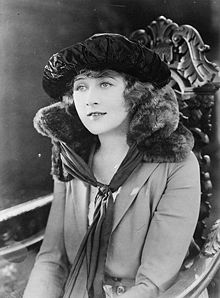In 1905, she emigrated to the United States through Ellis Island. In the new country, the Swedish teenager started working as a nursemaid and learned English quickly. Soon she started working as a model.
Already in 1907, she was named "Most beautiful woman in America". Penrhyn Stanlaws (1877–1957), one of the most successful and sought after cover artists of his day, picked Anna Q. Nilsson to become one of his models.
Anna was married to actor Guy Coombs (1916-1916) and to Norwegian-American shoe merchant, John Marshall Gunnerson (1923–1925). Nilsson has a star on the Hollywood Walk of Fame for her contribution to motion pictures at 6150 Hollywood Boulevard. She was the first Swedish-born actress to receive such an honor.
Nilsson's modeling led her to getting a role in the 1911 film Molly Pitcher. Films of special note for Anna were Seven Keys to Baldpate (1917), Soldiers of Fortune (1919), The Toll Gate and The Luck of the Irish (both 1920), and The Lotus Eater (1921).
She stayed at the Kalem studio for several years, ranked behind their top star Alice Joyce. In the twenties she freelanced successfully for Paramount, First National and many other studios and reached a peak of popularity just before the advent of talkies, despite a serious horse-riding accident which kept her from filming for almost two years. In 1923, she portrayed "Cherry Malotte" in the second movie based upon Rex Beach's The Spoilers, a role that would be played in later versions by Betty Compson (1930), Marlene Dietrich (1942), and Anne Baxter (1955).
In 1921 she returned to Sweden to record Värmlänningarna, her only Swedish movie. In 1926 she was named Hollywood's most popular woman. She welcomed royalty when the Swedish Crown Prince Gustav Adolf (later King Gustaf VI Adolf) and his wife Louise Mountbatten visited Hollywood. In 1928 she struck a record of fan mail, 30 000 letters a month, and that year Joseph Kennedy brought her to his newly formed film company Radio-Keith-Orpheum (RKO). The following year as she was horse riding, she fell off the horse, was thrown against a stone wall and breaking her hip. After a year of hard training she was on her feet again.


